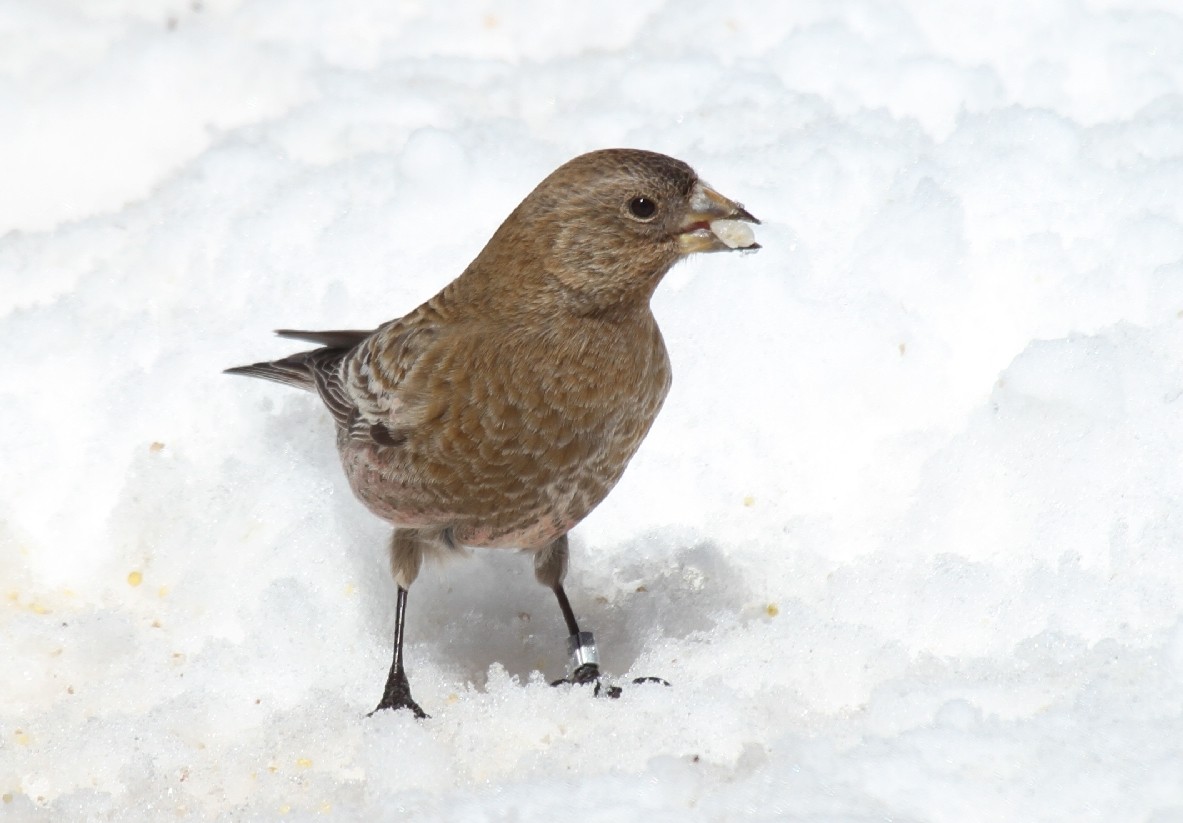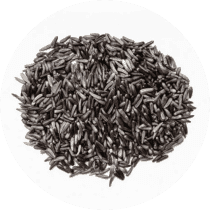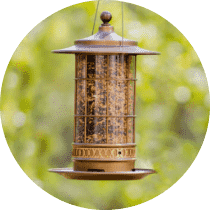Brown-capped Rosy-finch
A species of Rosy-finches and Asian Mountain-finches Scientific name : Leucosticte australis Genus : Rosy-finches and Asian Mountain-finches
Brown-capped Rosy-finch, A species of Rosy-finches and Asian Mountain-finches
Botanical name: Leucosticte australis
Genus: Rosy-finches and Asian Mountain-finches
Content
Description General Info
 Photo By TonyCastro , used under CC-BY-SA-4.0 /Cropped and compressed from original
Photo By TonyCastro , used under CC-BY-SA-4.0 /Cropped and compressed from original Description
The brown-capped rosy finch (Leucosticte australis) is a medium-sized finch endemic to North America. Adults are brown on the head, back, and breast with pink on the belly, rump, and wings. The forehead is black. They have short black legs and a long forked tail. Their breeding habitat is mountain peaks in the central Rocky Mountains of the United States. They build a cup nest in a cavity on a cliff, or re-use abandoned cliff swallow nests. In winter, these birds migrate short distances to lower elevations. These birds forage on the ground, but may fly to catch insects in flight. They mainly eat seeds from weeds and grasses and insects. They often feed in small flocks. At one time, the three North American rosy finches were considered to be one species. The population of this bird appears to be declining. 
Size
14-17 cm (5.7-6.5 in)
Colors
Brown
Black
Gray
Pink
Life Expectancy
5.83 years
Nest Placement
Ground
Clutch Size
3 - 6 eggs
Feeding Habits
Brown-capped Rosy-finch feeds on insects such as bugs, flies, beetles, moths, spiders especially in summer, and primarily seeds from various plants like grama grass and chickweed in winter by foraging on ground or snowfields, often near melting snow.
Habitat
Brown-capped Rosy-finch inhabits the alpine tundra of the Rocky Mountains, preferring areas above the treeline in high-altitude meadows and fell fields. This bird is adapted to life at elevations up to 14,200 feet, relying on seeds and insects for sustenance. Brown-capped Rosy-finch nests near cliffs and other natural shelters, descending to shrubby, wooded zones in winter.
Nest Behavior
Brown-capped Rosy-finch selects nesting sites through a process wherein the female chooses from options presented by the male. Nest building and egg incubation are done solely by the female. The timing of these activities and the specifics of parental care are determined by the species' habits and environmental conditions.
Nest Characteristics
Brown-capped Rosy-finch's nest is typically a tightly constructed cup made of grass, plant stems, and rootlets, with an exterior of mud, moss, and heavier stems. The nest may also contain feathers, fur, or bits of cloth, measuring about 5.2 inches in width and 2.9 inches in height. Nests are placed in protected recesses in cliffs, caves, or rocky fields, and occasionally in human structures.
Dite type
Granivorous
General Info
Feeding Habits
Bird food type

Black Oil Sunflower Seeds

Hulled Sunflower Seeds

Nyjer
Bird Feeder Type

Large Tube Feeder

Small Tube Feeder

Large Hopper

Small Hopper
Behavior
Brown-capped Rosy-finch exhibit a range of intriguing behaviors that highlight their social and reproductive dynamics. Males attract mates through grounded or aerial song displays, supplemented by a vivid physical courtship that includes fluffing feathers, raising the head and tail, wing quivering, and presenting nesting material. Notably, brown-capped Rosy-finch males do not use song for territorial purposes but rather maintain a 'floating territory' around the female, vigilantly dissuading rival males. Post-egg-laying, the male's mate-guarding decreases. Incubation and rearing responsibilities are shared by both sexes. As fledglings mature, brown-capped Rosy-finch family groups may remain together, gradually merging into larger flocks as they interact within their environment.
Species Status
ENDANGERED. Locally common to rare in Colorado, uncommon or rare in New Mexico, rare in Wyoming.